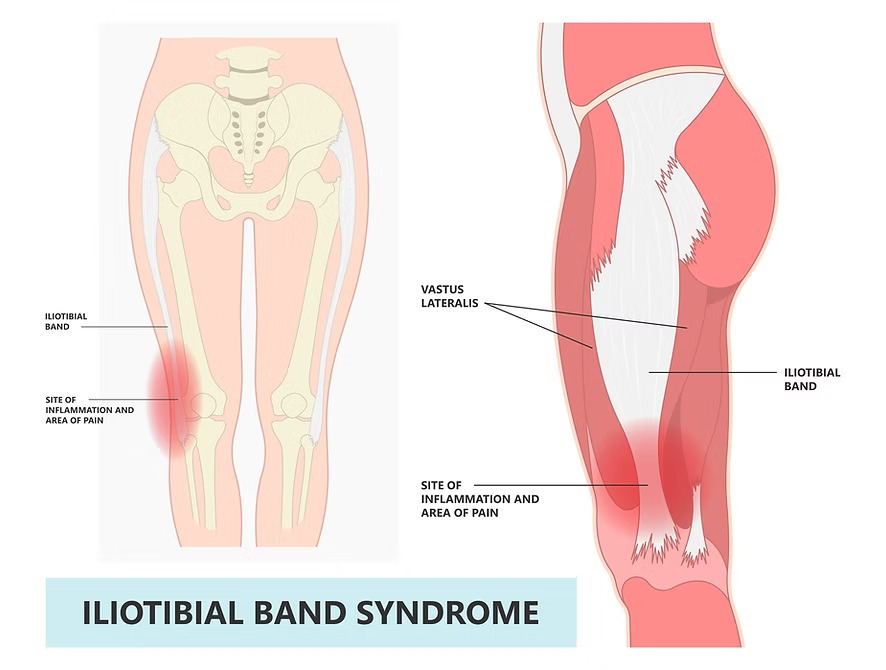54B, Tailstoi Town 5238 MT,
La city, IA 522364
Welcome to Advance Physical Therapy!
Welcome to Advance Physical Therapy!

ITBS, commonly referred to as “runner’s knee,” is a prevalent overuse injury affecting athletes, particularly runners and cyclists (Taunton et al., 2002). This condition accounts for a significant proportion of lateral knee pain and is typically associated with repetitive motion activities.
ITBS is primarily caused by repetitive knee flexion and extension, leading to stress on the iliotibial band (ITB) (Fairclough et al., 2007). The friction theory suggests that repetitive gliding of the ITB over the lateral femoral epicondyle causes inflammation and pain (Messier et al., 2018).
Intrinsic factors contributing to ITBS include anatomical variations, such as genu varum, excessive internal tibial torsion, and weak hip abductors (Taunton et al., 2002). Extrinsic factors involve sudden changes in training intensity, running on uneven or downhill surfaces, and improper footwear (Messier et al., 2018).
ITBS is one of the most common causes of lateral knee pain in runners, accounting for 1.6% to 12% of injuries in this population (Taunton et al., 2002). Among cyclists, ITBS comprises 15% to 24% of overuse injuries (Willick et al., 2018).
Patients with ITBS typically present with lateral knee pain, worsening with activities involving repetitive knee flexion and extension (Fairclough et al., 2007). Physical examination and imaging studies, such as MRI, may be used to confirm the diagnosis.
Conservative management is the primary approach, focusing on reducing inflammation, relieving pain, and correcting biomechanical imbalances (Messier et al., 2018). Treatment options include:
– Activity modification
– Physical therapy
– Nonsteroidal anti-inflammatory drugs (NSAIDs)
– Corticosteroid injections
Surgical interventions, such as ITB release and bursectomy, may be considered in refractory cases.
Fairclough, J., Hayashi, K., & Lyons, K. (2007). Iliotibial tract friction syndrome. Journal of Orthopaedic and Sports Physical Therapy, 37(10), 636-644.
Messier, S. P., Edwards, D. G., & Martin, D. F. (2018). Etiology and prevention of Iliotibial band friction syndrome. Journal of Athletic Training, 53(5), 456-464.
Taunton, J. E., Ryan, M. B., & Clement, D. B. (2002). A retrospective case-control analysis of 2002 running injuries. British Journal of Sports Medicine, 36(2), 95-101.
Willick, S. E., & Hansen, P. A. (2018). Cycling injuries. Journal of Orthopaedic and Sports Physical Therapy, 48(5), 432-441.
Leave A Comment